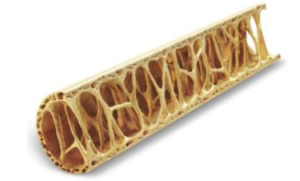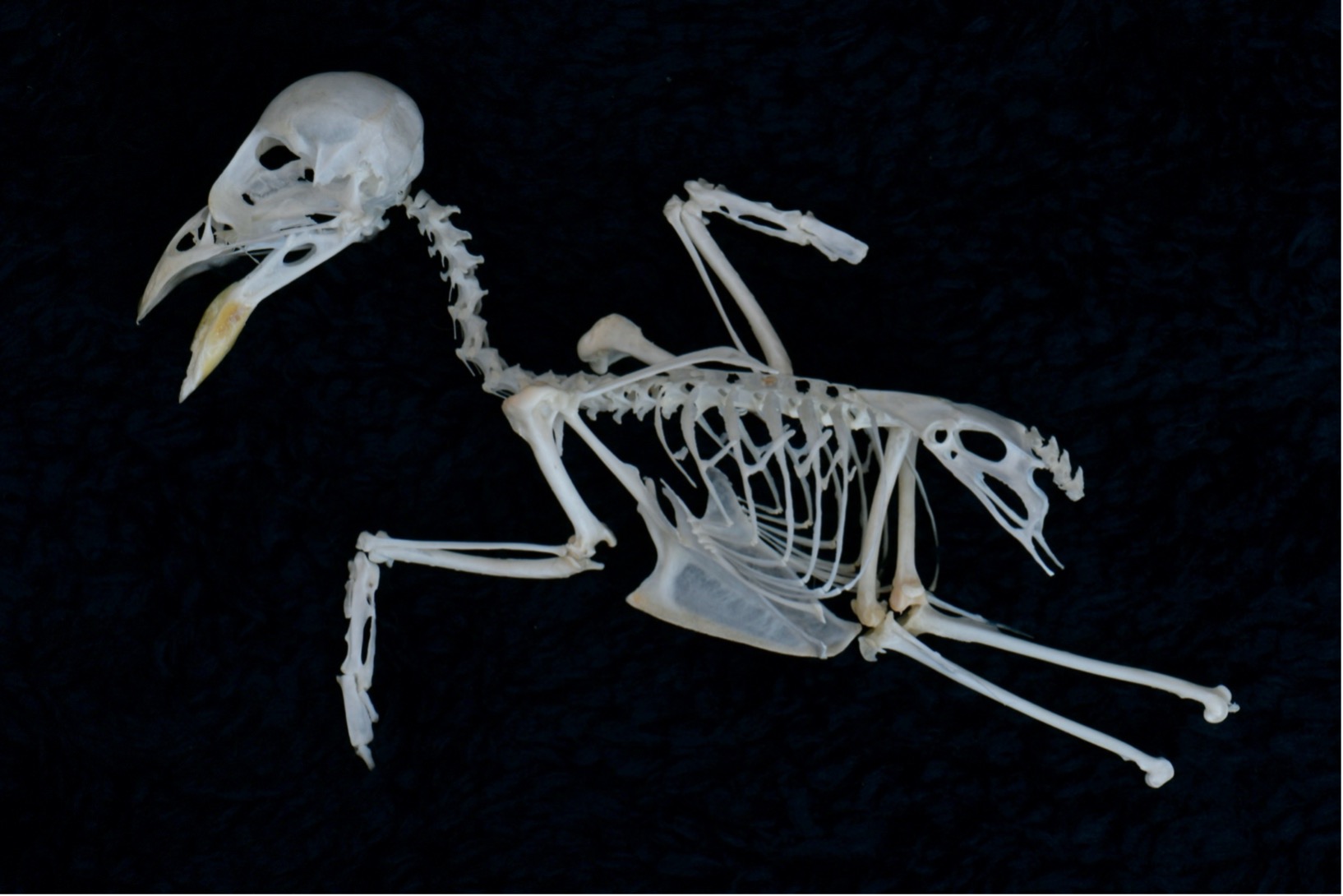Yes, some bird bones are hollow which has a wide range of evolutionary benefits for birds including flight and oddly enough, respiration.
Many of the bones found inside most species of bird are almost entirely hollow and air filled. They contain several ‘struts’ that provide structure and strength, reinforcing the bird bones.
The rigor of and force undergone during flight could be harmful to our avian friends over time. Taking off, landing and flight itself all require a lot of structural strength, making it important for bird bones to be durable. However, they must also be light enough for the bird to stay in the air.

The air filled quality of bird bones allows them to produce enough lift to counteract the force of gravity pulling them back down to the ground. However, bird bones also have much denser and durable exteriors to most mammal bones which allows them to be stronger than said mammals, all the while weighing about the same!
If that shocked you, you’re not alone. it is a common misconception that bird bones are hollow and therefore much lighter than those of a mammal. But like i said before, they weigh about the same!

The compromise between strength and lightness is what makes bird bones so remarkable. They’re sturdy enough to withstand the physiological stress of flight, but still light enough to allow that flight to happen in the first place.
Bird bones are said to be pneumatic, meaning they hold under air pressure. This is thanks to the internal air pockets found within them. This is yet another fascinating adaptation of these already fascinating bones that aid flight. These air pockets also lead me nicely onto our next section…
Other functions of bird bones
Now that we’ve covered the evolutionary benefits of bird bones in flight, relating to both reducing weight and increasing structural strength, let’s discuss something else.
Shockingly, the amount of energy required to keep their bodies in the air is massive, so birds need a solution. That solution is being hyper efficient at respiration. In case you, like myself, aren’t a biologist, let me fill you in.

Respiration describes the process of obtaining the necessary oxygen required to provide our bodies with enough energy. In lay man’s terms, it means getting enough oxygen to fuel our bodies.
Getting a lot of oxygen is vital for birds in order to allow flight. They of course have lungs and air sacs that do the brunt of respiration, as do practically all animals. However, the air pockets in their bones that make them pneumatic, lightweight and durable serve to help this. They are connected to the lungs and air sacs in a way that allows birds to have a much higher intake of oxygen whilst inhaling and exhaling. This of course means they are much more efficient at respiration, and as a result have plenty of energy. Said energy is then used to allow them to fly, completing the evolutionary marvels that are bird bones.

Anyway, i hope you’ve gained a new appreciation for the intricately beautiful way that birds, and other animals, are adapted to fit their needs. Please look into some other cool animal adaptations on your own (maybe even on this here website!)
Extra information
Animal-Club provides animal parties or animal handling workshops. You will be able to see, learn and interact with many wonderful animals with the help of our presenters. Our mobile zoo has many friendly animals such as rabbits, tarantulas, geckos, vinegaroons and more, perfect for an animal party. We can also come over to your school for an animal school visit or arrange for an animal workshop with us where the children can learn about looking after animals and animal behaviour, and have fun too.



